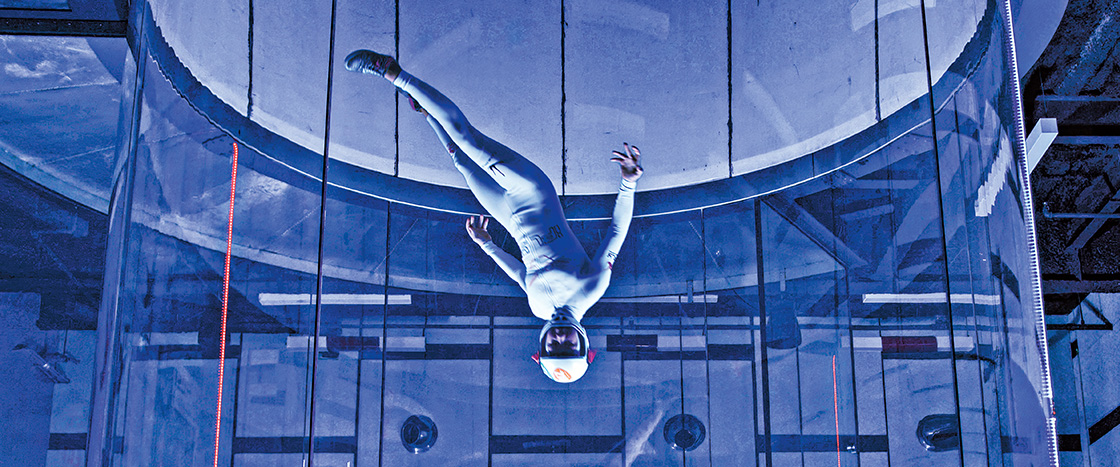E J CARR
Sydney Kennett is a four-time U.S. junior national champion in indoor skydiving.
Wind rushes past Sydney Kennett as she soars above the ground. The 16-year-old spins and twists elegantly through the air. She’s a competitive skydiver—but she’s never jumped out of an airplane!
Sydney, who lives in Colorado, is one of the world’s top athletes in the sport of indoor skydiving, also known as bodyflight. These competitors perform stunts inside a wind tunnel. That’s a big tube with fans that create powerful jets of air.
Sydney first flew at age 4. Her dad, an experienced outdoor skydiver, took her to an indoor skydiving facility. Sydney doesn’t recall much from that first flight. But her next one, at age 8, was unforgettable! Soon after, she joined a flight program for kids and began competing. In the tunnel, Sydney says, “I let go of all my worries and just fly.”
Wind rushes past Sydney Kennett. The 16-year-old soars above the ground. She spins and twists through the air. She’s a skydiver. But she’s never jumped out of a plane!
Sydney lives in Colorado. She’s a top athlete in the sport of indoor skydiving. It’s also known as bodyflight. Sydney performs stunts. She does them inside a wind tunnel. That’s a big tube with fans. They create powerful jets of air.
Sydney first flew at age 4. Her dad took her to an indoor skydiving facility. He’s an outdoor skydiver. Sydney doesn’t remember much from that first flight. Her next one was at age 8. That time was unforgettable! Sydney joined a flight program for kids soon after. She began competing. In the tunnel, Sydney says, “I let go of all my worries and just fly.”

